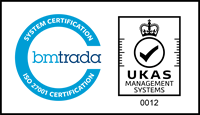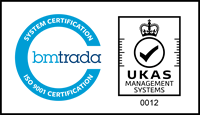Posted on: Wednesday May 12, 2021

So you’ve put together a shiny new benefits offer and you can’t wait to unveil it. But ‘landing the plane’ is where many HR teams struggle. How do you hold employees’ attention long enough to tell them everything they need to know? How will you reach diverse groups of employees with different needs? And how do you make sure employees will keep using their benefits when the launch is over?
Over the years we’ve worked closely with several internal teams to produce compelling benefits communications, so here are my top tips for getting it right…
1. Identify your audience. Who are all the groups of people you need to talk to? Who will be directly impacted, who do you need to help deliver your message and who should you keep in the loop? While you are identifying the different groups, think about who they are, how they may feel about the changes and how they are personally impacted.
2. Make it personal. Technology now allows us to communicate personally, both in the way we address a mass message (eg. Dear Lucy), but also in the way we present information. Entering an intranet site should be a personal experience, and you should be greeted by relevant information – my job role, my department etc. A bland blanket message gives an impression of laziness and a company that doesn’t care.
3. Create a vision. The day to day operational messages and information that your employees need to do their job will be more interesting, relevant and better received if they have context. So, share your vision. We know that to create engagement you need leadership and leaders are visionary. Give employees highlights of the business plan: the goals and objectives of the company, what is the long game?
4. Be clear about what you want to say. Think about the messages, but get to the point and make it relevant. Put yourself in your colleagues’ shoes: what’s important to them, what do they care about?
5. Create a conversation. One of the biggest changes in communication and marketing is the way we involve people. Direct involvement with clients via reviews on retail sites, comments on blogs and social media have been the catalyst for the biggest change to business communications in recent years. If we embrace a real dialogue with our customers and clients then we should afford our staff the same treatment. Involve them, allow them to collaborate with the business, communicate across the hierarchy and comment.
6. Keep talking. Once you’ve created the vision and shared the story, keep talking. Keep your employees updated with relevant information, changes and information. Ask for opinion and their help with a project. Keep communication channels open!
7. Make it stimulating - be creative. You are competing with so many other communications and messages. Your employees will no doubt have access to social media during their lunch break, as well as the traditional advertising channels out there. Work and home life has become blurred and you need to get their attention. Treat your employees as you would your customers: market to them. Be creative, entertaining, stimulating, thought provoking or, if appropriate, funny.
8. Diversity and variety. Use a variety of media to get your message across. The intranet is a great place to store all the detailed information, but use other media to support it. For instance, you may have told employees they can access retail employee discounts, but push notifications can alert users instantly of a discount available to them at a nearby shop, making it much more likely they’ll take advantage of the saving.
9. My final tip is to show respect. By following these rules and making a message personal and relevant you are showing respect to the people you are communicating with. If not, you are wasting valuable time and resources. Is what you’re saying worth the read?
Discover our staff benefits platform to find out about how Personal Group connects employees with their benefits.
Cost vs Value – What Really Matters in Health Benefits?
When it comes to creating employee health benefits, there’s always a tug-of-war between keeping costs low and focusing on the actual value those benefits bring.
Posted on: 11 April 2025 by Andrew Walker, New Business Development Director
Top Tips to Improve a Misfiring Recognition Strategy
Whether you’re a professional footballer, engineer or care worker, happiness at work relies on feeling valued, appreciated and respected.
Posted on: 28 March 2025 by Andrew Walker, New Business Development Director
Brace Yourselves: Reward Storm Incoming
In even the most optimistic assessment of the current situation, it is hard to foresee a situation where a substantial portion of workers are not left underwhelmed by their pay offers in 2025.
Posted on: 13 March 2025






